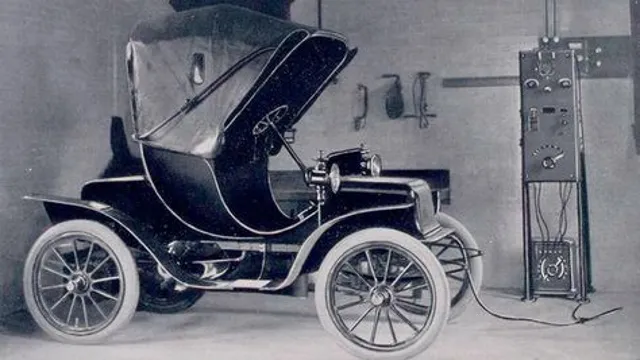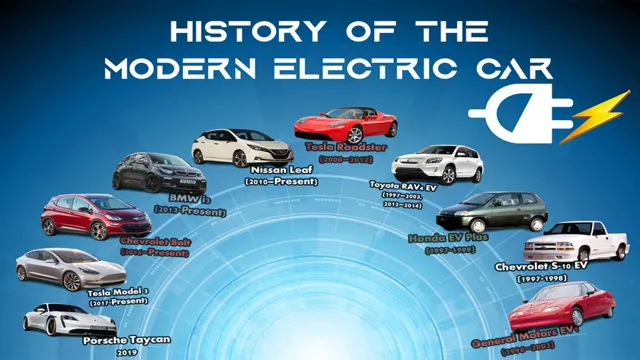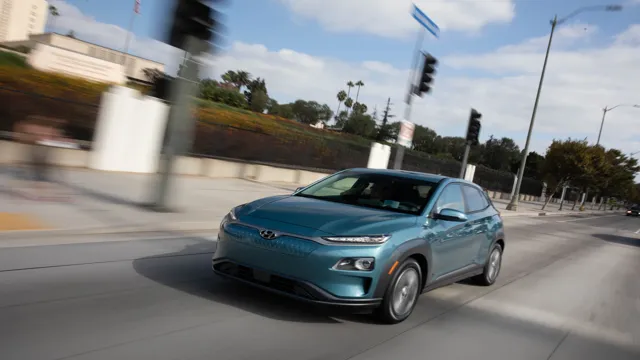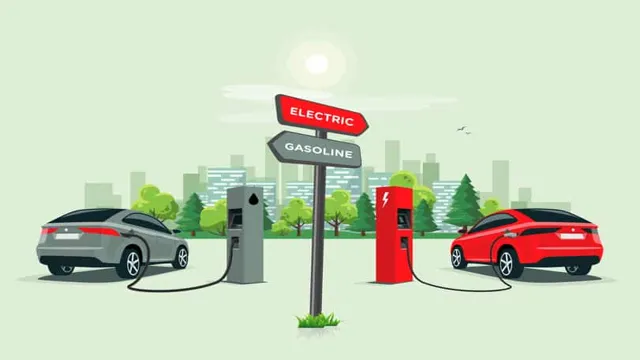The Revolutionary Spark: Tracing the Fascinating History of Electric Car Motors
The world is currently experiencing a significant shift in the way we move and power our devices. The electric motor revolution, which is taking place across the globe, is set to change the way we view transportation and energy consumption forever. Traditionally, we have relied on fossil fuels to power our vehicles and machinery.
However, this approach has proven to be harmful to our environment, leading to increased pollution levels and negative climate effects. As a result, more attention is being drawn towards clean energy, and the electric revolution is leading the charge. Electric motors are efficient, reliable, and environmentally friendly.
They provide a silent and smooth driving experience that is rapidly gaining popularity amongst consumers. Traditional automakers are now pushing to electrify their vehicles, with some countries proposing to phase out combustion engine cars in the near future. This change is not limited to just cars; the bike, aviation, and marine industries are also seeing similar rapid growth.
Moreover, the electric motor revolution is not just limited to personal transportation. Increasingly, electric motors are being used in industrial applications, such as energy storage, power tools, and heavy machinery. They are proving to be cheaper, more efficient, and easier to maintain than their fossil fuel-powered counterparts.
As with any revolution, there are challenges to overcome, such as the need for further development in battery technology and charging infrastructure. However, the rapid growth and investment in this sector indicate that the electric motor revolution is here to stay. It is an exciting and promising shift towards a cleaner, sustainable, and more efficient future.
The Early Days of Electric Cars
The history of electric car motors dates back to the early 19th century when inventors like Thomas Davenport and Robert Anderson developed the first rudimentary electric motors capable of powering a small vehicle. These early electric cars had limited range and were expensive to produce, but they proved to be a popular choice for urban transportation due to their quiet operation and lack of emissions. However, the popularity of electric cars waned with the introduction of gasoline-powered vehicles in the early 20th century, which were faster and had a greater range.
Fast forward to the present day, and electric cars have made a comeback with modern technology making them more efficient and affordable than ever before. Today, electric cars are seen as a viable alternative to traditional gas-guzzling vehicles, and they are helping to pave the way towards a greener future.
Invention of the First Electric Car
The early days of electric cars were a time of excitement and invention as scientists and engineers sought to find ways to harness the power of electricity for transportation. The first electric car was invented by Thomas Davenport, an American blacksmith, in 183 His creation featured a small electric motor and a battery, which powered the vehicle for short distances.
Over the next few decades, inventors continued to refine the electric car, but it wasn’t until the late 1800s that electric cars became a viable alternative to combustion engine vehicles. This was due to the invention of the lead-acid battery, which allowed electric cars to travel much further on a single charge. Despite their success, electric cars faced stiff competition from gasoline-powered cars, which were cheaper and easier to mass-produce.
It wasn’t until the 21st century that electric cars became mainstream, with the rise of companies such as Tesla and the push for renewable energy sources. Today, electric cars are seen as a crucial part of the future of transportation, as we strive to reduce our reliance on fossil fuels and move towards a more sustainable future.

Introduction of the Electric Motor
The electric motor has come a long way since its inception. The early days of electric cars were characterized by electric motors that were less powerful and efficient than their contemporary counterparts. These first-generation electric motors were powered by batteries that were bulky and heavy, and the vehicles could only travel short distances before needing to be recharged.
As a result, early electric cars had limited commercial success and were primarily used for local transportation and in other niche applications. However, over time, innovations in battery and motor technology have made electric cars more practical and efficient. Today’s electric motors are powered by advanced lithium-ion batteries that are lightweight and offer a longer range.
They are also more efficient than traditional petrol-powered engines, which means they have a lower environmental impact. As electric cars continue to gain in popularity, it’s clear that the electric motor has a bright future ahead.
The Rise of the AC Motor
The history of electric car motors is a fascinating one, with many innovations and advancements over the years. One of the most significant developments was the rise of the AC motor. While DC motors were the first to be used in electric cars, they had some limitations, particularly when it came to power and speed.
The introduction of AC motors, which use alternating current to produce a magnetic field that drives the motor, changed everything. They were more efficient, more powerful, and able to run at higher speeds, making them ideal for electric cars. Today, AC motors are the most widely used type of motor in electric vehicles, and their continued development is helping to push the limits of what is possible for the future of green transportation.
Tesla’s Contributions to AC Motors
Tesla is a name that is synonymous with innovation, and his contributions to the world of AC motors are no exception. Tesla’s work on AC motors was groundbreaking, and it revolutionized the way that electricity was harnessed and used for power. At the time, DC motors were the primary means of generating electrical power, but Tesla’s work with AC motors proved to be far more efficient and cost-effective.
The rise of AC motors changed the way we use and generate electrical power, and it wouldn’t have been possible without Tesla’s contributions. His invention helped to usher in a new era of electrical power generation and consumption, and it continues to impact how we use energy today.
The Advantages of AC Motors over DC Motors
AC Motors AC motors, also known as alternating current motors, have been on the rise in recent years due to their many advantages over DC motors. One significant advantage is their efficiency in converting electrical energy into mechanical energy. As AC motors generate a rotating magnetic field, they do not require brushes to interact with the rotor, which reduces friction and increases the motor’s lifespan.
Furthermore, AC motors are less prone to wear and tear, and they require less maintenance than DC motors. They also have better speed regulation and can operate at variable speeds without the need for gearboxes. Another crucial benefit is that they are more cost-effective to manufacture, which has led to their widespread use in industrial and commercial settings.
Overall, the many advantages of AC motors have made them a popular choice for a wide range of applications, from appliances and machinery to transportation and energy production.
The Emergence of Regenerative Braking
Regenerative braking is a game-changer in the world of electric vehicles, allowing them to recapture and reuse energy that would otherwise be lost during braking. And it’s all thanks to the rise of the AC motor. Unlike their DC counterparts, AC motors are capable of reversing their electrical current, enabling them to act as generators during deceleration.
This, in turn, allows electric vehicles to harness energy that would otherwise be dissipated as heat and store it in their batteries, extending their range and improving efficiency. The emergence of regenerative braking has revolutionized the way we think about electric vehicles, making them not only environmentally friendly but more practical and cost-effective as well. As electric vehicle technology continues to improve, we can expect to see even more innovative features like regenerative braking that make them even more competitive with traditional gas-powered vehicles.
Recent Advancements in Electric Motors
The history of electric car motors dates back to the early 19th century when pioneers like Thomas Davenport and Robert Anderson developed the first few versions. However, advancements in electric motor technology have come a long way since then. In recent years, there has been an increasing focus on reducing the size and weight of electric motors while improving their output and energy efficiency.
One major breakthrough in this field is the development of axial flux motors. Unlike traditional motors that use radial magnets, axial flux motors place the magnets on either side of the rotor, resulting in a more compact design and increased power density. Other advancements include the use of permanent magnets with high magnetic strength and the incorporation of smart sensors that enable real-time monitoring and control of the motor’s performance.
As electric cars become increasingly popular, these advancements in motor technology will play a crucial role in improving their efficiency and driving range while reducing their overall cost.
Permanent Magnet Motors
Permanent Magnet Motors Recent advancements in electric motors have led to significant improvements in their performance, efficiency, and sustainability. One such innovation is the permanent magnet motor, which utilizes powerful magnets instead of traditional wire coils to generate rotational motion. This type of motor has a compact design, high power density, low maintenance requirements, and excellent control capabilities, making it ideal for a wide range of applications.
In addition, permanent magnet motors are highly efficient due to their ability to convert electrical energy into mechanical energy with minimal losses. As a result, they are often used in electric vehicles, wind turbines, industrial machinery, and other high-performance systems. With ongoing research and development, permanent magnet motors are expected to become even more efficient, affordable, and widespread in the near future.
Induction Motors
Induction Motors Electric motors have come a long way, and recent advancements have revolutionized the way we think about their performance. One of the most significant improvements is in induction motors, which are the most commonly used type of electric motor in the world. A new type of material called amorphous metal has been developed to make induction motors more efficient and environmentally friendly.
By reducing the resistance of the motor’s core, amorphous metal allows the induction motor to use less energy and produce less heat than traditional motors. This not only saves energy but also extends the life of the motor, making it more durable. The use of amorphous metal in induction motors also means that they can be made smaller, which makes them more versatile and easier to fit into various applications.
These advancements in induction motors are just the beginning, and we can expect even more exciting developments in the near future.
The Future of Electric Motors
The history of electric car motors dates back to the mid-19th century, with the development of the first permanent magnet motor in 183 However, it was not until the 20th century that electric cars became a viable alternative to gas-powered vehicles. The advent of modern technology brought about significant advancements in electric motors, allowing them to become more efficient, powerful, and affordable.
Today, electric cars have become more popular than ever, thanks to the increased focus on sustainability and the need to reduce carbon emissions. The future of electric motors looks bright, with ongoing research and innovation aimed at improving their performance and reducing their environmental impact. As technology continues to evolve, we can expect electric cars to become even more prevalent in the coming years, ushering in a new era of sustainable transportation.
Conclusion
In conclusion, the history of electric car motors is a fascinating journey through innovation, experimentation, and ultimately, progress. From the primitive motors of the 1800s to the sleek, efficient systems of today, electric car motors have undergone a remarkable evolution driven by necessity, ingenuity, and a commitment to a cleaner, greener future. While the road to widespread electric vehicle adoption may have been long and winding, we can now confidently say that the future of transportation is electric – and it’s powered by some of the most advanced, innovative, and exciting motors the world has ever seen.
“
FAQs
What is an electric car motor?
An electric car motor is an electric motor that powers an electric car and drives its wheels.
When were electric car motors invented?
Electric car motors were invented in the mid-19th century.
How does an electric car motor differ from a gasoline-powered car motor?
An electric car motor is powered by an electric battery and has fewer moving parts than a gasoline-powered car motor, which is powered by gasoline combustion.
What is the range of an electric car powered by an electric motor?
The range of an electric car powered by an electric motor varies, usually between 100 to 300 miles on a single charge, depending on the battery capacity and the driving conditions.







